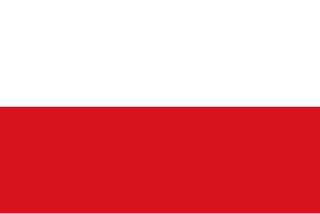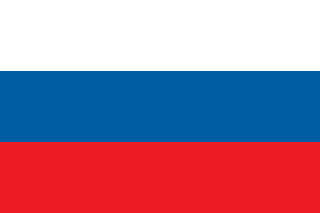
The prince-electors, or electors for short, were the members of the electoral college that elected the emperor of the Holy Roman Empire.

Salzburg is a state (Land) of the modern Republic of Austria. It is officially named Land Salzburg to distinguish it from its eponymous capital — the city of Salzburg. For centuries, it was an independent Prince-Bishopric of the Holy Roman Empire.
Berchtesgadener Land is a Landkreis (district) in Bavaria, Germany. It is bounded by the district of Traunstein and by the state of Austria.

The Austrian Empire was a Central-Eastern European and multinational great power from 1804 to 1867, created by proclamation out of the realms of the Habsburgs. During its existence, it was the third most populous monarchy in Europe after the Russian Empire and the United Kingdom. Along with Prussia, it was one of the two major powers of the German Confederation. Geographically, it was the third-largest empire in Europe after the Russian Empire and the First French Empire.

Cisleithania, officially The Kingdoms and Lands Represented in the Imperial Council, was the northern and western part of Austria-Hungary, the Dual Monarchy created in the Compromise of 1867—as distinguished from Transleithania. This name for the region was a common, but unofficial one.

The Duchy of Teschen, also Duchy of Cieszyn or Duchy of Těšín, was one of the Duchies of Silesia centered on Cieszyn in Upper Silesia. It was split off the Silesian Duchy of Opole and Racibórz in 1281 during the feudal division of Poland and was ruled by Silesian dukes of the Piast dynasty from 1290 until the line became extinct with the death of Duchess Elizabeth Lucretia in 1653.

The Habsburg monarchy, also known as the Danubian monarchy, or Habsburg Empire, was the collection of empires, kingdoms, duchies, counties and other polities that were ruled by the House of Habsburg, especially the dynasty's Austrian branch.

The Duchy of Bavaria was a frontier region in the southeastern part of the Merovingian kingdom from the sixth through the eighth century. It was settled by Bavarian tribes and ruled by dukes (duces) under Frankish overlordship. A new duchy was created from this area during the decline of the Carolingian Empire in the late ninth century. It became one of the stem duchies of the East Frankish realm which evolved as the Kingdom of Germany and the Holy Roman Empire.

The Lands of the Bohemian Crown were a number of incorporated states in Central Europe during the medieval and early modern periods connected by feudal relations under the Bohemian kings. The crown lands primarily consisted of the Kingdom of Bohemia, an electorate of the Holy Roman Empire according to the Golden Bull of 1356, the Margraviate of Moravia, the Duchies of Silesia, and the two Lusatias, known as the Margraviate of Upper Lusatia and the Margraviate of Lower Lusatia, as well as other territories throughout its history. This agglomeration of states nominally under the rule of the Bohemian kings was historically referred to simply as Bohemia. They are now sometimes referred to in scholarship as the Czech lands, a direct translation of the Czech abbreviated name.

The Duchy of Carniola was an imperial estate of the Holy Roman Empire, established under Habsburg rule on the territory of the former East Frankish March of Carniola in 1364. A hereditary land of the Habsburg monarchy, it became a constituent land of the Austrian Empire in 1804 and part of the Kingdom of Illyria until 1849. A separate crown land from 1849, it was incorporated into the Cisleithanian territories of Austria-Hungary from 1867 until the state's dissolution in 1918. Its capital was Ljubljana.

Austrian Silesia, officially the Duchy of Upper and Lower Silesia, was an autonomous region of the Kingdom of Bohemia and the Habsburg monarchy. It is largely coterminous with the present-day region of Czech Silesia and was, historically, part of the larger Silesia region.

The Prince-Bishopric of Eichstätt was a small ecclesiastical principality of the Holy Roman Empire. Centered on the town of Eichstätt, it was located in the present-day state of Bavaria, somewhat to the west of Regensburg, to the north of Neuburg an der Donau and Ingolstadt, to the south of Nuremberg, and to the southeast of Ansbach.

The Kingdom of Bavaria was a German state that succeeded the former Electorate of Bavaria in 1805 and continued to exist until 1918. With the unification of Germany into the German Empire in 1871, the kingdom became a federated state of the new empire and was second in size, power, and wealth only to the leading state, the Kingdom of Prussia.

The Grand Duchy of Würzburg was a German grand duchy centered on Würzburg existing in the early 19th century.

The Archduchy of Austria was a major principality of the Holy Roman Empire and the nucleus of the Habsburg monarchy. With its capital at Vienna, the archduchy was centered at the Empire's southeastern periphery.

The Electorate of Bavaria was an independent hereditary electorate of the Holy Roman Empire from 1623 to 1806, when it was succeeded by the Kingdom of Bavaria.

Tyrlaching is a municipality in the district of Altötting in Bavaria, Germany. It is part of the municipal association (Verwaltungsgemeinschaft) Kirchweidach.

The Duchy of Styria was a duchy located in modern-day southern Austria and northern Slovenia. It was a part of the Holy Roman Empire until its dissolution in 1806 and a Cisleithanian crown land of Austria-Hungary until its dissolution in 1918.

The Electorate of Salzburg, occasionally known as the Grand Duchy of Salzburg, was an electoral principality of the Holy Roman Empire from 1803–05, the short-lived successor state of the Prince-Archbishopric of Salzburg.

The grand title of the emperor of Austria was the official list of the crowns, titles, and dignities which the emperors of Austria carried from the foundation of the empire in 1804 until the end of the monarchy in 1918.



















